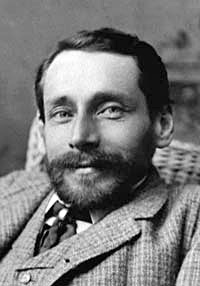George Mercer Dawson

George Mercer Dawson (August 1, 1849 – March 2, 1901) was a Canadian scientist and surveyor. He was born in Pictou, Nova Scotia, the son of Sir John William Dawson. By age 11, he was afflicted with tuberculosis of the spine (Pott's disease) that resulted in a deformed back and stunted his growth. However, his physical limitations did not deter Dawson from becoming one of Canada's greatest scientists.
Tutors and his father provided his educational needs during his slow recovery from the illness. Dawson later attended the High School of Montreal and McGill University (part-time) before moving to London to study geology and paleontology at the Royal School of Mines (now part of Imperial College London) beginning in 1869. Dawson graduated after three years with the highest marks in his class. Dawson received an LL.D. from Queen's University in 1890 and then from McGill University in 1891.
Dawson began his career in the 1870s as a professor of chemistry at Morrin College in Quebec City. He then performed extensive surveys of Western Canada in the 19th century beginning with the International Boundary Survey from 1872 to 1876. The result was a 387-page report called Geology and Resources of the Region in the Vicinity of the 49th parallel from the Lake of the Woods to the Rocky Mountains, with Lists of Plants and Animals Collected, and Notes on the Fossils from the Killadeer Badlands currently part of Grasslands National Park. This report established Dawson as a respected scientist.
During 1883 and 1884, Dawson travelled through the Canadian Rockies where he was tasked by the Canadian government to map out major mountains and mountain passes as well as significant rivers. Some of the many peaks he discovered were Mount Assiniboine 3,618 metres (11,870 ft) and Mount Temple 3,543 metres (11,624 ft). As a result of his field research, a map of his work was published in 1886 covering the Canadian Rockies from the US border to Red Deer Valley and Kicking Horse Pass.
In 1887, he led an expedition into the Yukon, developing some of the first maps of what later became the separate territory. His report was republished ten years later to satisfy the public's interest in the region as a result of the Klondike Gold Rush. Dawson City was named after him. Dawson Creek, British Columbia is also named in his honour.
Dawson became a staff member of the Geological Survey of Canada in 1875, progressed to assistant director in 1883 and finally to director in 1895.
In 1891, Dawson was named a fellow of the Royal Society of London. In 1892, he was made a Companion of the Order of St Michael and St George.
Dawson died unexpectedly in Ottawa after a one day bout with acute bronchitis. He was interred in the family plot in the Mount Royal Cemetery in Montreal.
References
- Beneath My Feet. George Mercer Dawson with Phil Jenkins. Toronto: McLelland and Stewart. 11th edition 2007. ISBN 9780771043888
- George Dawson - The Little Giant. Joyce Barkhouse, 1974, Toronto : Clarke, Irwin,, ISBN 0772007349
- Biography at the Dictionary of Canadian Biography Online
- George M. Dawson
- Sources of Montreal-W at www.rootsweb.com
